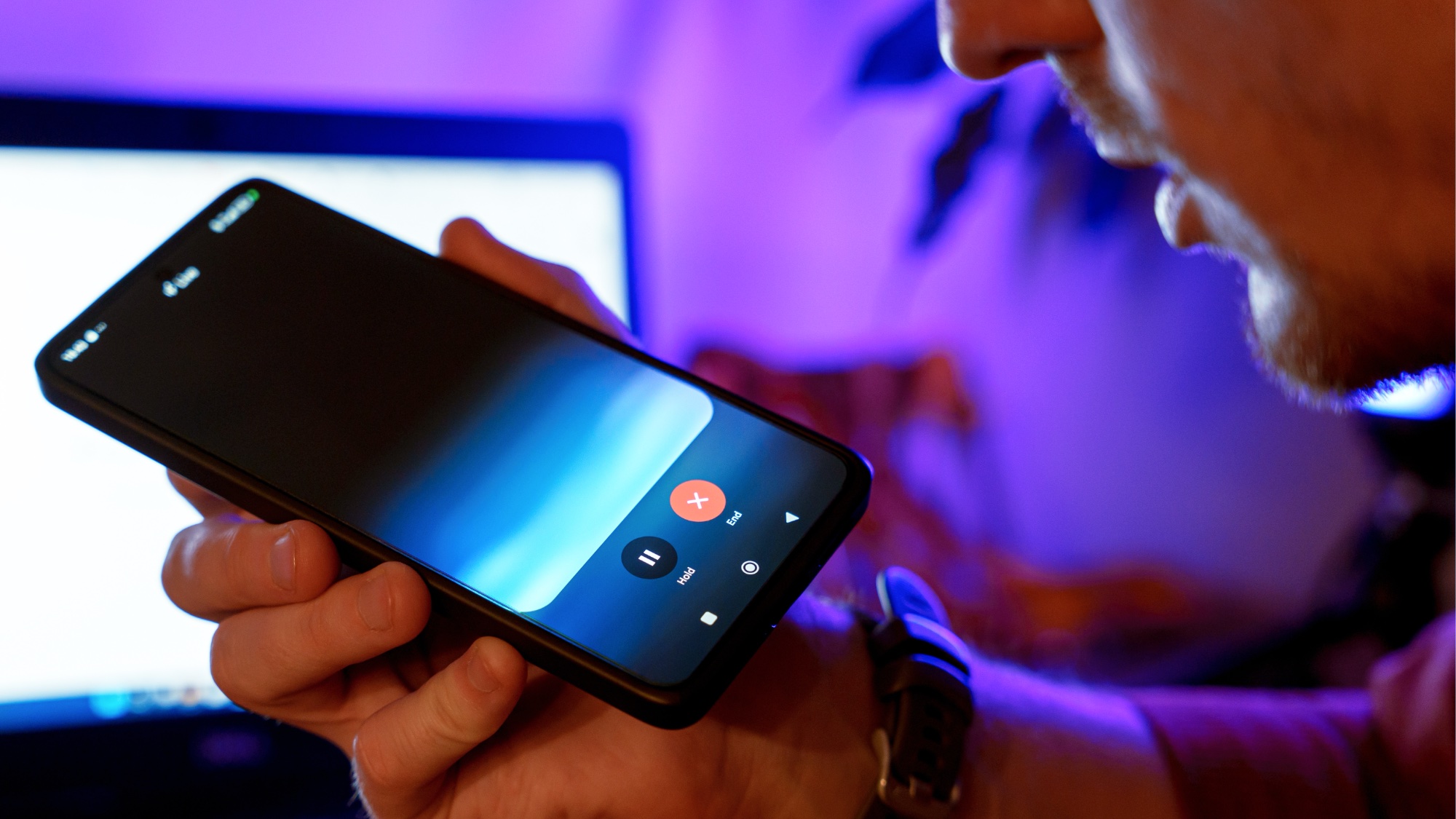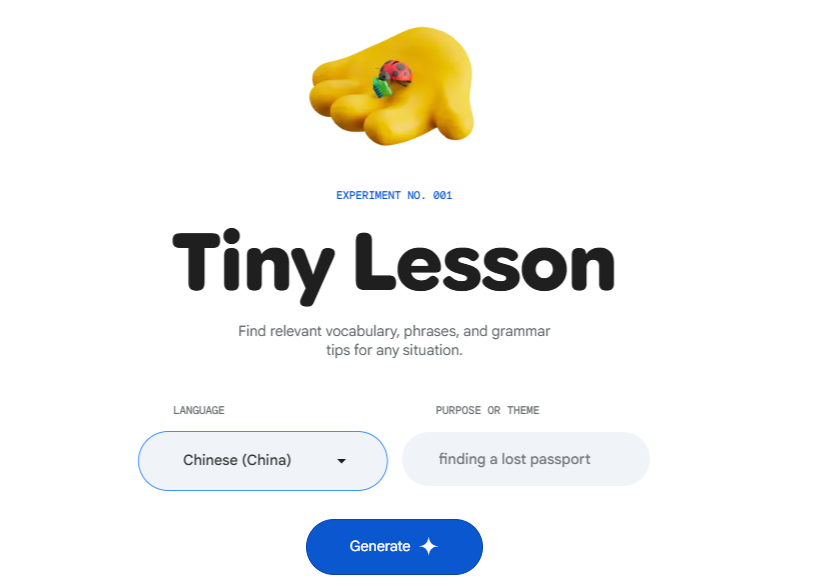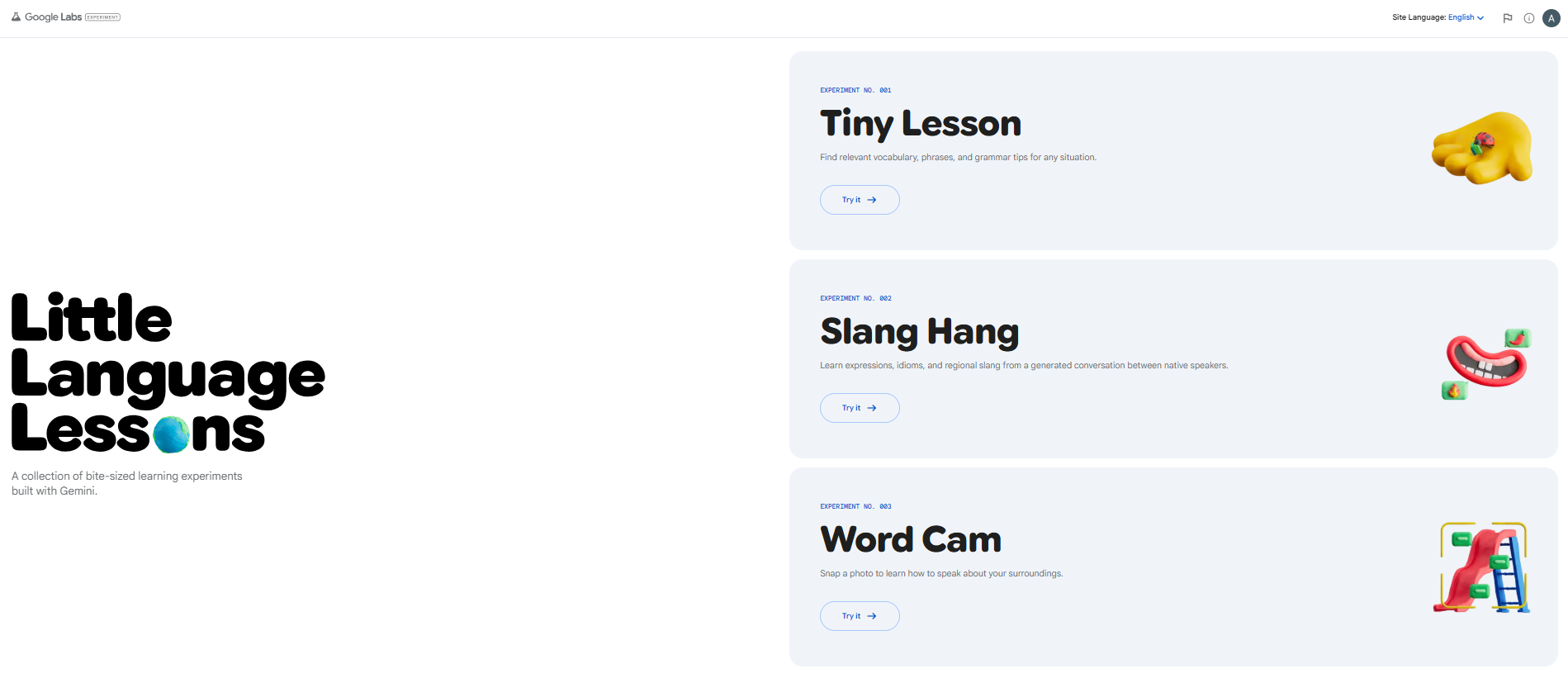Google's new AI language tool could change how we learn languages — and Duolingo should be worried

Bringing the fight to Duolingo, Google is releasing three new AI experiments with a focus on teaching people languages in a more personalized way.
These experiments are still very much in their formative stages, only available through Google’s early access AI Labs. This is where Google uploads experimental tools that show the kind of technology it's working on for the public to test.
Currently called Little Language Lessons, this new idea was developed with Google Gemini and offers three different experimental tools.
Tiny Lesson

The first is called Tiny Lesson. This offers two boxes, one to choose the language you want to learn and a second where you can input a theme (with a limit of 50 characters).
It then offers a list of words you need to learn, with pronunciations, meanings and audio to hear how it sounds. The tool will also offer full sentences with the meanings and audio and an explanation on tenses and context as well.
Slang Hang
The second tool, known as Slang Hang, lets you choose a country. This will then produce a conversation between two imaginary people using slang words throughout, which you can click on to get a full explanation of the meaning and context.
Google has warned this section can be prone to AI hallucinations and potentially make up slang or misunderstand meanings. If you are going to use it, double-check any terms before you try and impress locals with them!
Get instant access to breaking news, the hottest reviews, great deals and helpful tips.
Word Cam
The final tool is Word Cam. This is similar to Google’s image translation tool, where you can take a photo of text in a different language and get a translation. With this new option, you can take a photo, and Google will provide the terms in the chosen language for different things you can see.

For example, take a photo of a fruit market and choose Spanish, and you’ll get the terms in Spanish for each of the fruits.
It is not clear if this will ever become its own app or even just an extension of Google’s Gemini tool. However, you can currently access all three parts via Google Labs.
So far, the tool is available in a wide range of languages, including English, French, German, Greek, Hebrew, Hindi, Italian, Japanese, Korean, Turkish, and more.
There is also the ability to drill down to specific regional versions of languages, which is especially important for the slang learning tool.
More from Tom's Guide
- I tested ChatGPT vs Google for AI-powered shopping — and there's a clear winner
- Meta takes on ChatGPT with new standalone AI app — here's what makes it different
- I put ChatGPT-4o vs Claude 3.7 Sonnet through a 5-round face-off — one left the other in the dust

Alex is the AI editor at TomsGuide. Dialed into all things artificial intelligence in the world right now, he knows the best chatbots, the weirdest AI image generators, and the ins and outs of one of tech’s biggest topics.
Before joining the Tom’s Guide team, Alex worked for the brands TechRadar and BBC Science Focus.
He was highly commended in the Specialist Writer category at the BSME's 2023 and was part of a team to win best podcast at the BSME's 2025.
In his time as a journalist, he has covered the latest in AI and robotics, broadband deals, the potential for alien life, the science of being slapped, and just about everything in between.
When he’s not trying to wrap his head around the latest AI whitepaper, Alex pretends to be a capable runner, cook, and climber.
You must confirm your public display name before commenting
Please logout and then login again, you will then be prompted to enter your display name.










